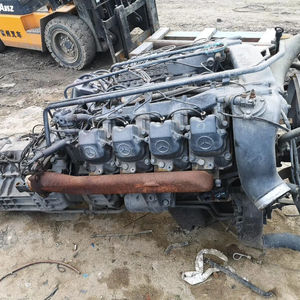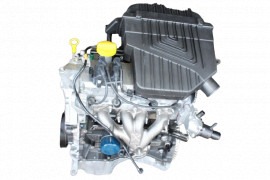Checking Out the Inner Functions of a Compact Car's Engine System
As drivers, we typically take for granted the elaborate procedures that take place within the confines of our vehicle's engine system. The small yet intricate machinery that drives us onward is a marvel of engineering precision and control. From the regulated surges in the burning chamber to the meticulous timing of fuel shot, every component plays a critical role in the smooth operation of the engine. In this exploration of a portable lorry's engine system, we will certainly decipher the internal functions of this mechanical symphony, clarifying the mysteries that drive us forward on our day-to-day journeys.
Burning Refine Overview
The burning process in a small automobile's engine system is an essential device that effectively transforms fuel into power to power the car. This procedure occurs within the combustion chamber of the engine, where gas and air mix, fire up, and produce regulated surges. The burning process includes four main stages: consumption, compression, power, and exhaust.
Throughout the intake stage, the piston relocates downward, attracting a blend of air and fuel right into the burning chamber. The next stage, compression, includes the piston relocating upward, compressing the air-fuel mixture to increase its strength. Subsequently, in the power phase, the spark plug sparks the compressed combination, causing a rapid development of gases that compels the piston pull back. This descending motion produces the power required to drive the automobile. In the exhaust phase, the burnt gases are expelled from the combustion chamber with the exhaust valve, preparing the chamber for the following cycle. This cyclic burning process is essential to the procedure of a portable lorry's engine system, making sure reliable energy conversion for propulsion.
Piston and Cylinder Interaction

The piston's precise fit within the cyndrical tube is necessary for keeping optimal compression and avoiding power loss during burning. Tight clearances in between the piston and cyndrical tube wall surfaces ensure reliable sealing, allowing the piston to relocate efficiently without allowing gases to leak past. Appropriate lubrication is likewise crucial to reduce rubbing and put on in between these components, boosting longevity and performance.
Furthermore, the design and products used in manufacturing the piston and cylinder effect engine efficiency and sturdiness. Modern engines typically use lightweight yet durable products like aluminum alloys for pistons and cylinder liners to lower inertia and improve thermal performance. Overall, the harmonious interaction between the piston and cyndrical tube is fundamental to the engine's performance and overall efficiency.
Fuel Injection System Capability
Fuel shot systems in small car engines play an important function in precisely supplying gas to the burning chamber for controlled and efficient ignition. The fuel shot system functions by injecting fuel into the combustion chamber at the optimum minute during the engine's operation (opel corsa engine). This precise timing guarantees that the fuel mixes equally with the air for proper burning, bring about improved fuel efficiency and this post lowered exhausts
There are largely two sorts of fuel shot systems used in small lorry engines: port fuel injection (PFI) and direct gas shot (DFI) PFI systems infuse gas right into the intake port before the consumption shutoff, while DFI systems infuse gas directly right into the burning chamber. Both systems have their benefits, with DFI providing better fuel atomization and PFI providing a much more cost-effective service.
Understanding Engine Air Conditioning Mechanisms
Efficient procedure of a portable car's engine depends greatly on the effectiveness of its cooling systems. Engine cooling is necessary to avoid overheating, which can cause severe damage and decreased efficiency. The cooling Full Report system in a small automobile usually consists of a number of components working together to regulate the engine temperature. One vital part is the radiator, which makes use of coolant to absorb warm from the engine. As the hot coolant flows through the radiator, it launches warmth into the air, cooling prior to returning to the engine. The water pump distributes the coolant via the engine and radiator, making certain a constant circulation to regulate temperature. Furthermore, the thermostat assists control the coolant circulation to maintain ideal engine temperature level. Some lorries also have cooling down fans that turn on when extra cooling is required, such as throughout rush hour or warm weather condition. Understanding these engine cooling mechanisms is vital for maintaining the efficiency and durability of a small lorry's engine system.

Exhaust System Parts Explained
The optimum performance of a small lorry's engine air conditioning systems depends on a complementary system referred to as the exhaust system, which comprises numerous important components for making sure reliable discharges and engine efficiency. The exhaust system consists of elements such as the exhaust manifold, catalytic converter, muffler, and tailpipe. The exhaust manifold gathers exhaust gases from the engine's cylinders and routes them to the catalytic converter. The catalytic converter then transforms hazardous contaminants in the exhaust right into less visit this site right here hazardous emissions prior to releasing them via the muffler and tailpipe.
One crucial element of the exhaust system is the oxygen sensing unit, which monitors the oxygen degrees in the exhaust gases to aid regulate fuel intake and make sure ideal engine efficiency. opel corsa engine. Furthermore, the resonator may exist in some exhaust systems to minimize sound degrees. Generally, the exhaust system plays an important duty in keeping engine efficiency, reducing unsafe exhausts, and making certain a quieter driving experience for small vehicle proprietors

Conclusion
Finally, the small automobile's engine system is a complex combination of components that work together to assist in the burning process, transform gas into power, and remove waste gases. Comprehending the inner workings of the engine system, consisting of the piston and cyndrical tube communication, fuel shot system, engine cooling mechanisms, and exhaust system parts, is essential for keeping ideal efficiency and efficiency of the vehicle.
The burning process in a portable lorry's engine system is a crucial device that effectively transforms gas right into energy to power the vehicle.Fuel injection systems in compact lorry engines play a critical role in exactly delivering gas to the combustion chamber for effective and controlled ignition.There are mainly 2 types of fuel shot systems used in small vehicle engines: port gas shot (PFI) and straight fuel injection (DFI) Comprehending these engine air conditioning mechanisms is crucial for preserving the efficiency and durability of a compact car's engine system.
The ideal functioning of a compact vehicle's engine air conditioning devices depends on a corresponding system understood as the exhaust system, which makes up different essential elements for making sure reliable exhausts and engine efficiency.